Information Board

- Information Board
- Composition of Taekwondo
- Poomsae
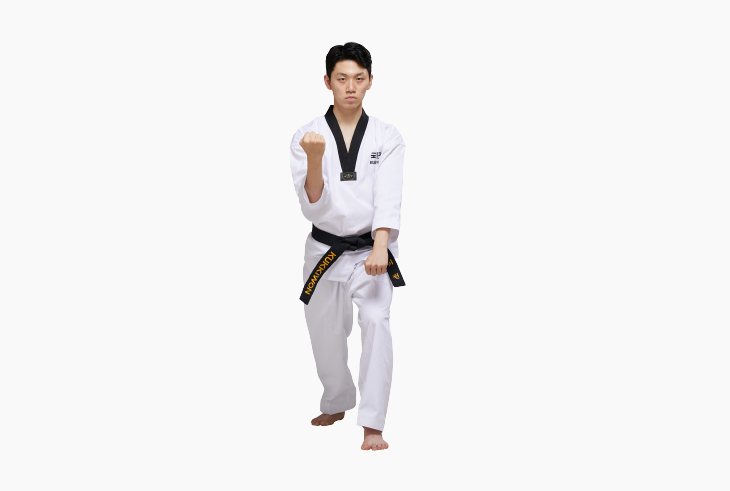
Taegeuk 7 Jang represents “Gan” in Palgwe. “Gan” symbolizes a strong mountain range with meandering ridges and the connection between mountains. It represents the spine, the flexion and extension of joints and vertebrae in the human body. A mountain is more than a pile of soil; it includes the flow of groundwater through its rocks. Mountain soil, rocks, and groundwater correspond with muscles, joints, and blood vessels and nerves in the human body, respectively. At this stage, you should train to exert force along with the efficient use of flexion and extension of joints and muscles.
Read more
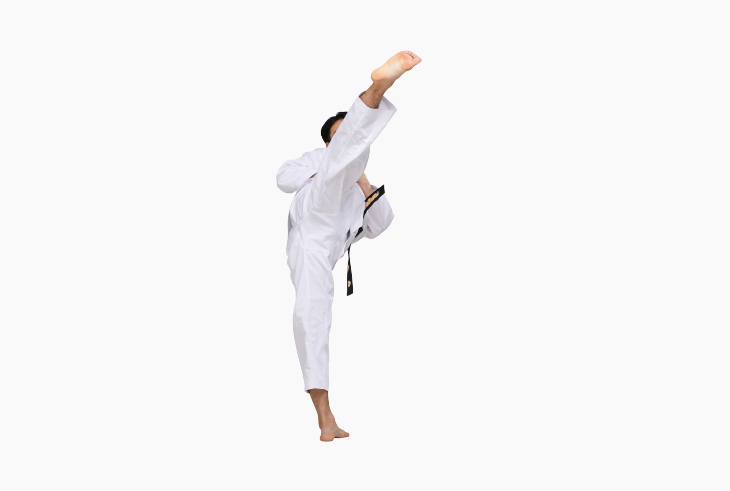
Taegeuk 6 Jang represents “Gam” in Palgwe. “Gam” symbolizes flowing water. In the human body, it represents the ear, including the ability to hear sound and feel the sturdiness and gentleness of the power around oneself as their own. In this process, you should understand how to counterattack by brushing off the opponent’s
strength as water flows over obstacles. Like the water flows without interruption, irrespective of the path’s width and obstacles, Poomsae techniques should flow seamlessly. However, sometimes water suddenly falls and forms a waterfall. Thus, this practice process includes the overall release of power and practice, as well as the connection of apparent techniques
Read more
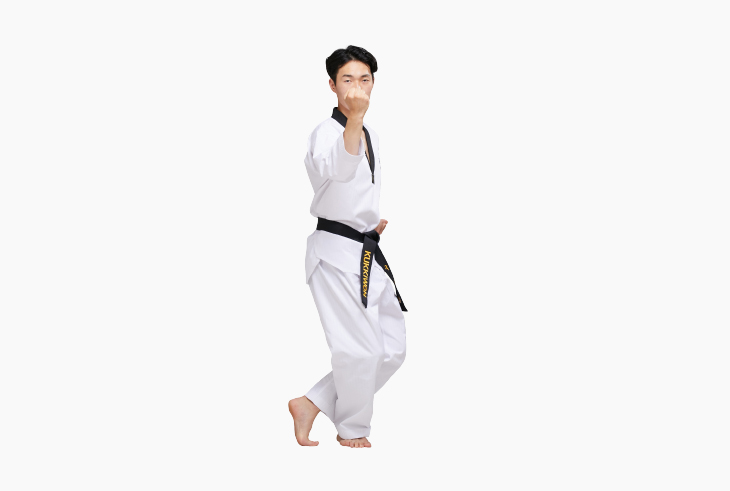
Taegeuk 5 Jang represents “Son”, in Palgwe. “Son” symbolizes wind, which is gentle but can abruptly transform into a typhoon. In the human body, it corresponds with the pelvis and hip joint. Meaning, the muscles around the pelvis and hip joint must be relaxed to assume a stable and powerful posture while practicing Poomsae. This part of the body is the base that supports the spine and helps in taking stable and flexible postures. It is also the source of the rotational force and powerful kicks. Taegeuk 5 Jang involves the practice of techniques with different postures to exert power diversely, like an unpredictable typhoon
Read more
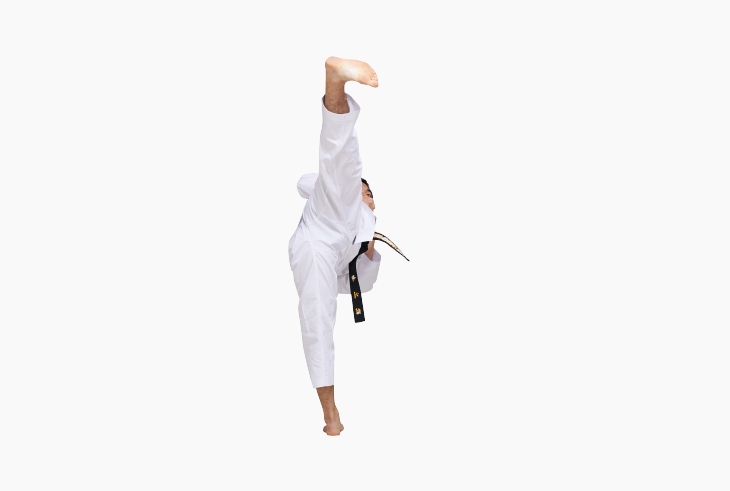
Taegeuk 4 Jang represents “Jin” in Palgwe. “Jin” symbolizes arousing instant thunder and lightning. In the Orient, Jin is referred to as the dragon of heaven. In the human body, it represents mobility of both the feet that facilitates speedy movement and powerful kicks. Using the feet, you can twist your body to quickly change direction or attack. This is a process of attacking the opponent by taking advantage of the distance from the opponent, like an ever-changing dragon.
Read more
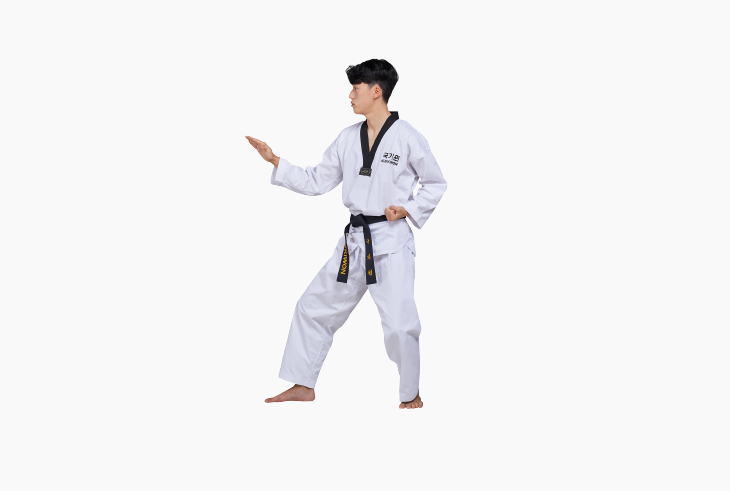
Taegeuk 3 Jang represents “Ri” in Palgwe. Ri symbolizes fire and clarity, like the sun. It corresponds with the heart in the human body, which further refers to the process of developing a courageous mindset. If you look at the nature of fire, it starts with a small spark and spreads rapidly, burning everything in an instant. Such uncontrolled force and light that spreads everywhere does not help in Poomsae practice. Taeguek 3 Jang is a practice method comprising the accurate learning of forces and techniques that correspond with fire and light, and practicing the bold moves by connecting defense and attack.
Read more
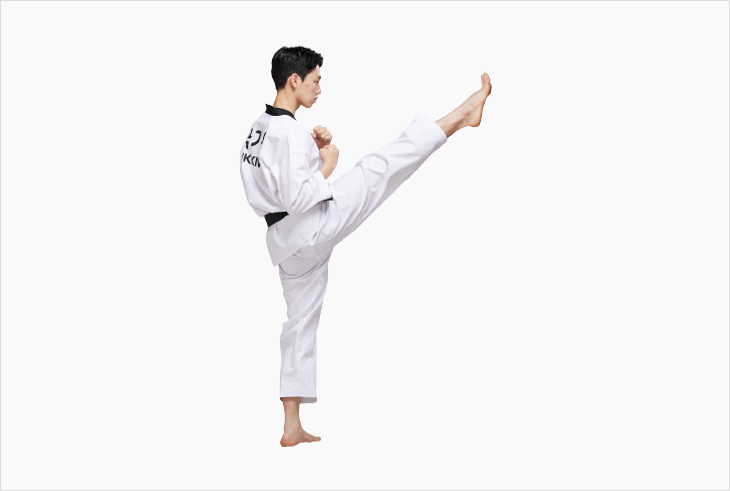
Taegeuk 2 Jang symbolizes “Tae” in Taegeuk. “Tae” literally means a pond with a calm surface. Applied to the human body, it means controlling breath and further, emotions. While the Poomsae practice, you need to concentrate your aura on the lower abdomen which must not disperse outside the body due to the moves. Irrespective of acquiring technique, using them for precise attack and defense is difficult without controlling breathing and emotions. Thus, the practitioner should train
Poomsae like a pond with a calm surface but with depth, and achieve a state of “an iron fist in the velvet glove.”
Read more
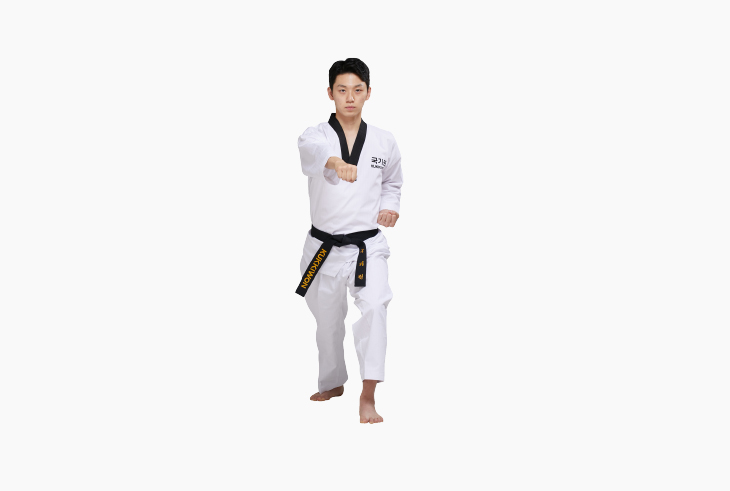
Taegeuk 1 Jang corresponds with Keon (sky) or heaven, that is, the first trigram of Palgwe which represents heaven and light. Keon refers to Yangin the relative action of Yin and Yang in Taegeuk. It represents the energy that marks the beginning of all things. In addition, since Keon corresponds with the head in the human body, it implies the correct understanding of Taekwondo’s basic movements and the acquisition of skills through the first Poomsae practice.
Read more